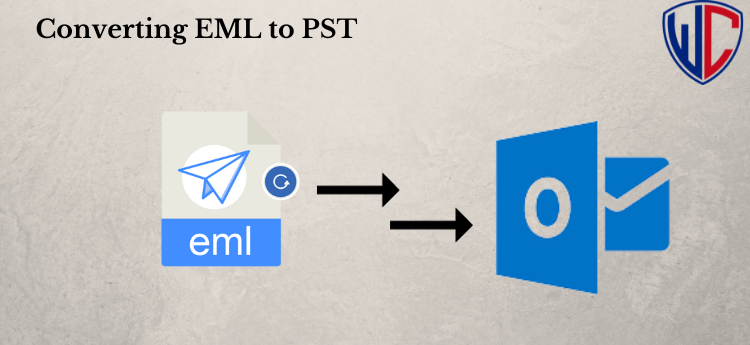The Evolution of Notches in Apparel Making

The intricacies of the garment industry often go unnoticed by the everyday consumer. Yet, it is the minor details like notches, often perceived as trivial, that play a significant role in the construction and aesthetics of a piece of clothing. Notches, small cuts or markings made in the fabric during the cutting phase, serve as a roadmap for tailors and machine operators. They guide the alignment, sewing, and overall construction of a garment, ensuring that the finished product is both functional and attractive.
But what types of notches exist, and why are they so crucial in the world of fashion and garment making? This article aims to shed light on the definition, types, and importance of notches in the garment industry. It will also delve into the latest trends and challenges, providing a comprehensive guide that appeals to professionals in the field as well as curious consumers.
Definition of Notches in Garments
In the realm of garment construction, notches are small cuts or indentations made in the fabric, typically at the edge of a pattern piece. They function as essential guides for garment assembly, particularly when it comes to aligning different pieces of fabric accurately. While the concept may seem straightforward, the expertise required to place and use notches effectively should not be underestimated.
The Historical Context
Understanding notches also requires a brief glimpse into the history of garment making. The technique has its roots in traditional tailoring and has evolved significantly over the years, especially with the advent of computer-aided design (CAD) tools. However, the basic principle remains unchanged: Notches are landmarks on the roadmap of garment construction, ensuring each piece comes together as envisioned by the designer.
Precision and Consistency
A key aspect of notches is their contribution to the precision and consistency of mass-produced garments. In factories where hundreds or even thousands of similar items are made, notches act as essential controls to reduce errors and wastage. By serving as a reliable guide for machine operators, they ensure that each garment meets the brand’s quality standards, further instilling trust in the consumer.
Types of Notches
Notches come in a variety of shapes and sizes, each with a distinct purpose and application in garment construction. Their selection often depends on the type of fabric being used, the specific garment design, and the sewing techniques employed.
Straight
Straight notches are simple straight cuts made into the edge of the fabric or pattern piece. They are among the most commonly used notches and are often employed in everyday apparel like t-shirts and pants. Their main function is to assist in aligning fabric pieces correctly before they are sewn together.
Slant
Slant notches, also known as diagonal notches, are slanted cuts that usually indicate the angle at which two fabric pieces should be joined. They are particularly useful in garments with angled seams, like certain types of skirts and jackets. The slant allows for easier identification and can be especially beneficial when dealing with intricate designs.
V-Notches
V-Notches are shaped like the letter “V” and are used mainly in situations that require a strong visual cue for alignment. These are often seen in complex garments such as suits or evening gowns. The V shape serves as an unmistakable guide, minimizing the risk of misalignment during the sewing process.
U-Notches
U-Notches are rounded notches that serve a similar function as V-Notches but are less sharp and easier to cut. They are frequently used in fabrics that are more delicate and susceptible to fraying, like silk or fine wool. U-Notches offer a gentler guide to alignment without compromising the integrity of the fabric.
In summary, the type of notch selected can greatly impact the ease of assembly and the final quality of the garment. Knowing when to use which type of notch is a skill that comes with experience and an in-depth understanding of fabrics and garment construction.
The versatility of these various notches highlights their indispensable role in the garment industry. But their utility extends far beyond mere shapes cut into fabric.
Importance of Notches in Garment Construction
The seemingly inconspicuous notches often go unnoticed in the grand scheme of garment creation. Yet, their role is vital and far-reaching. This chapter elucidates how notches serve as essential components in various aspects of garment manufacturing.
Ensuring Alignment
One of the primary functions of notches is to guarantee the accurate alignment of fabric pieces. When sewing together multiple pieces of fabric, it’s crucial that they align precisely to maintain the integrity of the design. Mismatched alignment can lead to skewed seams, lopsided garments, and overall poor quality. Notches act as markers to ensure that each fabric piece is positioned correctly relative to its adjacent pieces, thereby preventing such errors.
Aiding in Sewing Process
The sewing phase is where the garment begins to take shape, and notches serve as invaluable guides during this process. For machine operators or tailors, notches offer visual cues that simplify the sewing process, making it more efficient and less susceptible to mistakes. Whether it’s indicating where a pleat should go or where two different fabrics meet, notches play a pivotal role in expediting and enhancing the sewing operation.
Enhancing Aesthetic Appeal
While functionality is key, aesthetics also hold considerable weight in the garment industry. Notches assist in creating crisp seams, clean lines, and accurate gathers, all of which contribute to the garment’s visual appeal. This meticulous attention to detail elevates the overall quality of the piece, thereby creating a more marketable and visually pleasing product.
Standardizing Production
In mass production scenarios, consistency is king. Notches enable garment factories to standardize their production processes. They act as a universal language of sorts, guiding machine operators across different shifts and even different locations. This standardization ensures that each garment meets the brand’s established quality benchmarks, bolstering the brand’s reputation for reliability and excellence.
Latest Trends and Innovations
As the garment industry continues to evolve, driven by advancements in technology and changing consumer demands, so do the techniques and tools used in garment construction—including notches. This chapter delves into some of the latest trends and innovations that are redefining the role and utility of notches in modern-day apparel making.
Digital Pattern Making
With the advent of computer-aided design (CAD) software, pattern making has transitioned from manual drafting to a more precise, digital format.
Laser Cutting and Notching
Traditional methods of cutting and notching often involve the use of blades or scissors, which, while effective, can be time-consuming and prone to human error. Laser cutting technology has emerged as a revolutionary solution, offering extreme precision and speed.
Eco-Friendly Practices
Sustainability is a growing focus within the garment industry. Eco-conscious brands are researching ways to minimize waste throughout the production process. The precise placement and sizing of notches through digital means can contribute to this goal by reducing fabric waste, a step forward in making the industry more sustainable.
IoT and Smart Manufacturing
The integration of the Internet of Things (IoT) into manufacturing processes is a groundbreaking development. Smart machines can now communicate with each other to ensure that every aspect of garment construction, including the placement and use of notches, adheres to specified guidelines. This technology further minimizes errors and enhances production efficiency.
Quality Control Automation
Automated quality control systems are starting to incorporate machine learning algorithms to detect inconsistencies in garments. These systems can identify misplaced or incorrect notches, flagging them for review before the garment proceeds further down the production line, thereby improving quality assurance.
The garment industry is unmistakably advancing, with continuous innovations that impact even the smallest details like notches. Keeping abreast of these trends is crucial for professionals in the field, as well as for consumers interested in understanding the value and quality of the clothes they wear.
Challenges and Solutions
Despite the advancements and utility of notches in garment construction, the process is not devoid of challenges. From the handling of delicate fabrics to scaling production, various difficulties can arise. This chapter delves into these challenges and presents solutions that aim to address them.
Handling Delicate Fabrics
Challenge: Delicate fabrics like silk or fine wool can fray or tear easily, and creating notches in these materials presents a risk of damaging them.
Solution: Using softer notching techniques such as U-Notches, or opting for temporary marking solutions like fabric-friendly chalks or markers, can mitigate the risks associated with damaging delicate fabrics.
Scaling Production
Challenge: As production scales, maintaining the precision of notch placement across thousands of garments becomes increasingly challenging.
Solution: Automated cutting and notching systems, aided by computerized pattern making, ensure high levels of accuracy even when production numbers are large.
Workforce Training
Challenge: New technologies and techniques require a skilled workforce capable of handling advanced machinery and software.
Solution: Regular training programs and workshops can help familiarize the workforce with new technologies, ensuring seamless integration into the production process.
Material Waste
Challenge: Incorrectly placed or cut notches can result in material waste, impacting both costs and sustainability efforts.
Solution: Utilizing digital pattern making and automated quality control can significantly reduce the margin of error, thereby minimizing waste.
Quality Consistency
Challenge: Ensuring that every notch on every garment meets quality standards is a labor-intensive task.
Solution: Quality control automation systems, sometimes incorporating machine learning algorithms, can scan garments to ensure that notches are correctly placed, flagging any inconsistencies for review.
Economic Constraints
Challenge: Advanced notching solutions like laser cutting and smart manufacturing systems require substantial financial investment.
Solution: For smaller manufacturers, incremental upgrades can be a viable route. Starting with advanced CAD software for precise pattern making can be an initial step before fully automating the notching process.
By understanding these challenges and implementing targeted solutions, the garment industry can continue to benefit from the utility of notches while also innovating and improving upon established techniques.



